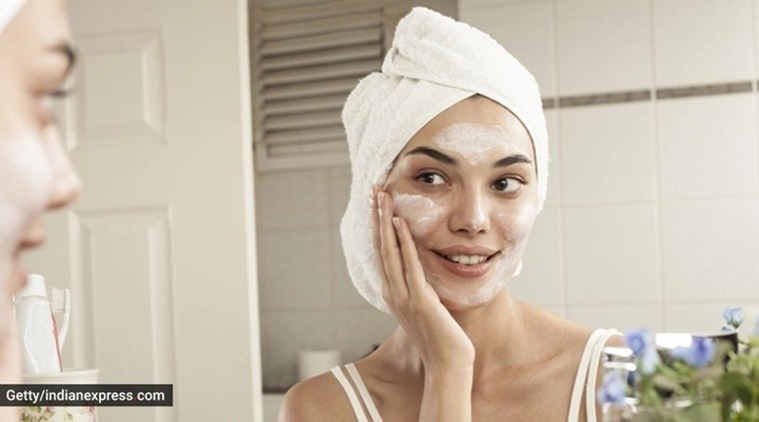With a vast array of brands, products and ingredients, how do you determine which ingredients are the most effective?
The world of skincare is ever-evolving. A few years ago, we were vigorously using walnut scrubs, and wearing sun protection or sunscreen was preferred by only a few. While harsh, physical scrubs have proven to damage the protective layer of the skin, leaving it dry and without moisture, sun damage is a known cause for hyperpigmentation, sunburn, dark spots, wrinkles, fine lines, etc. With the advent of K-beauty or Korean skincare, ingredients such as vitamin C, ginseng and aloe vera have become increasingly popular.
But, with a vast array of brands, products and ingredients, how do you determine which ingredients are the most effective? We list out five popular skincare ingredients that have been featured in predominant beauty trends this year.
Hyaluronic acid
Found in serums, moisturisers and essences, hyaluronic acid is a powerful humectant, which locks in moisture over the surface of the skin. Although it occurs naturally in the human body, it recedes significantly with age which results in drier, matured skin and the appearance of fine lines. Hyaluronic acid is rich in antioxidants and can help protect the skin from everyday dust and pollution. Frequent, topical application of this acid can help the skin retain more moisture and as a result, appear soft and supple.
Vitamin C
Vitamin C is known to be an ingredient enriched with potent antioxidant properties which aids natural cell regeneration process and accelerates the skin renewal. It fights off radicals and pollution and provides protection from harmful UV sun rays. It is an extremely handy ingredient as it helps boost the skin’s natural collagen supply, adding a nourishing glow to keep it looking radiant. It also helps diminish pigmentation, dullness, dark spots and fine lines. The ingredient is perfect for oily skinned beauties to incorporate into their regime, as vitamin C serums have a watery-runny consistency which gets soaked up by the skin in seconds. It is also well-known for boosting collagen production as collagen is a naturally occurring protein that depletes over time as we age. Lower levels of collagen can lead to fine lines and wrinkles and vitamin C can help combat it.
Vitamin E
This ingredient finds mention in a host of popular skincare products. Popularly known to help fade acne scars, it also works on hyperpigmentation. Not only that, but with regular use it may even help delay the onset of ageing. According to Healthline, “Vitamin E is high in antioxidants, and it affects blood circulation. That might be why people notice a difference in the firmness and structure of their skin after topical use of vitamin E oil.” A study published in Indian Dermatol Online journal states that vitamin E is an important fat-soluble antioxidant and used in many cosmetic products as it “protects the skin from various deleterious effects due to solar radiation by acting as a free-radical scavenger.”
Aloe vera
The humble aloe vera has been a versatile part of skincare for many years. This beauty ingredient has a multitude of benefits ranging from hydration to moisturisation. It can be combined and used with SPF to help battle harmful UV rays that can cause an array of skin problems such as sunburns, heat rashes, hyperpigmentation, dark spots etc. Aloe also helps to take care of frizzy hair and dandruff troubles. The ingredient is derived from a plant that can be grown quite easily, even in households.
Acids or AHA/BHAs
AHA (alpha-hydroxy acids) and BHA (beta-hydroxy acids) are a recent entry to the skincare culture in India, but are extremely popular in the West and in Korean skincare. Beauty gurus swear by it. According to Healthline, “Chemical exfoliants are acids that get rid of dead skin cells. They come in various concentrations.” Chemical exfoliants are known to carefully remove thin layers of dead skin cells for a brighter appearance and stimulate the production of collagen, revealing fresher skin after every use. While AHA is made from lactic acid — derived from milk — BHA has salicylic acid, which works great for those with oily or acne-prone skin.
https://youtube.com/watch?v=f3dKBm9E7Ts%3Fversion%3D3%26%23038%3Brel%3D1%26%23038%3Bshowsearch%3D0%26%23038%3Bshowinfo%3D1%26%23038%3Biv_load_policy%3D1%26%23038%3Bfs%3D1%26%23038%3Bhl%3Den-US%26%23038%3Bautohide%3D2%26%23038%3Bwmode%3Dtransparent
📣 For more lifestyle news, follow us on Instagram | Twitter | Facebook and don’t miss out on the latest updates!
Source: Read Full Article



